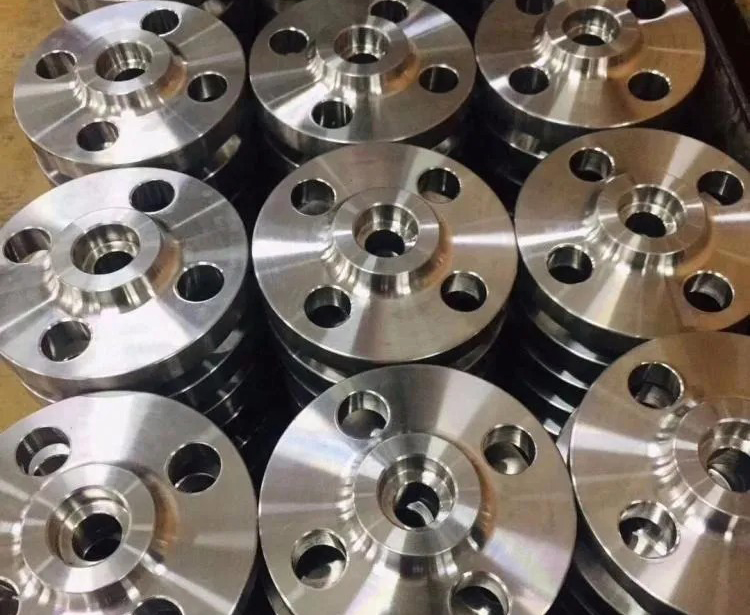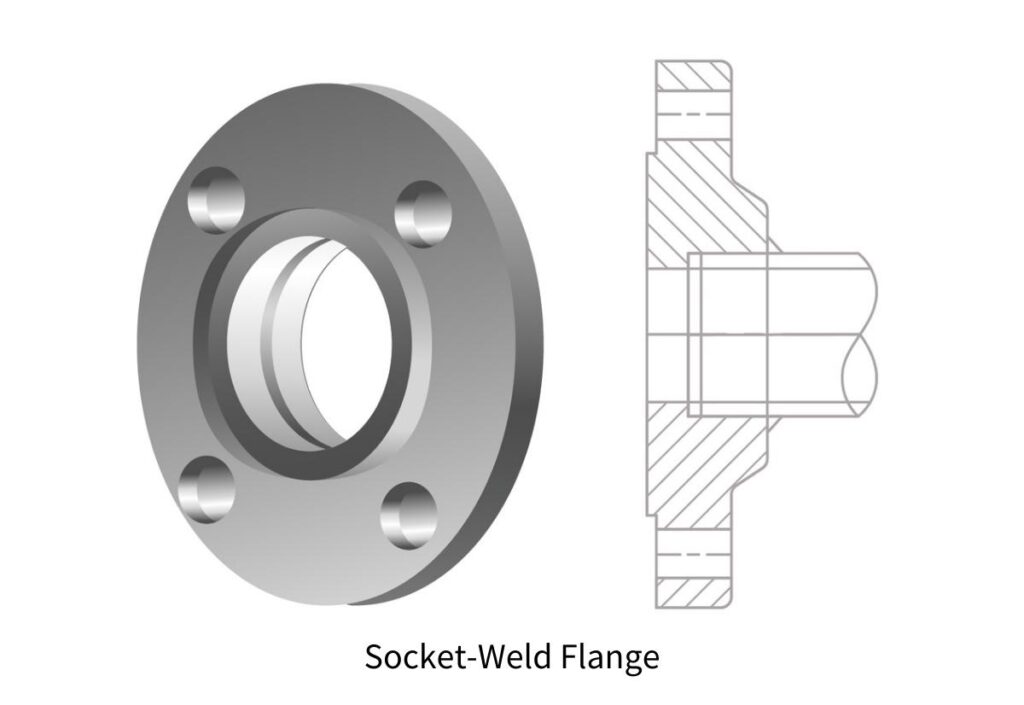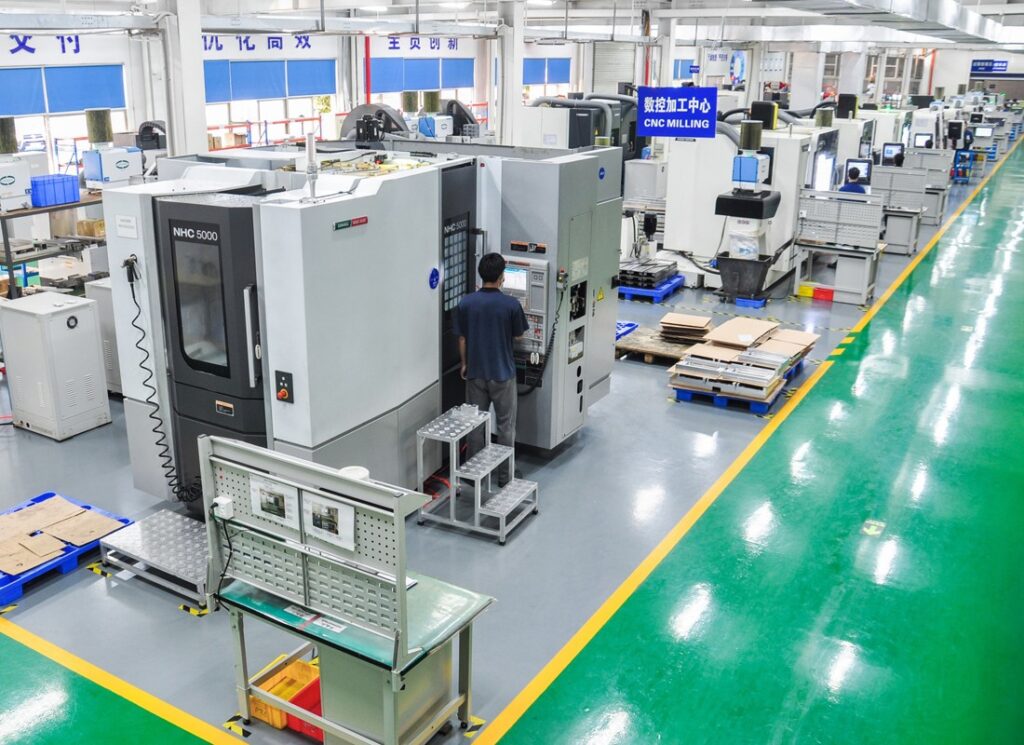One-Stop Socket Welding Titanium Flanges Manufacturer In China
In the modern industrial system, socket-welded titanium flanges, as key components for pipeline connections, have become the “hub” in the fields of chemical industry, marine engineering, aerospace, etc. due to the excellent properties of titanium alloys.
- Forging
- CNC Machining
- ISO 9001:2015
- ISO 13485:2016
- 50000 Pieces/Month
- Pressure Upto 2500#
- Specification:1/2"-36"
- Sealing Surface:RF, FF, RTJ

Trusted Socket Welding Titanium Flanges Factory - Wstitanium
The socket welding flange conforming to ASME B16.5 is a hubbed flange, which is generally constructed of a circular flange body and a tapered hub. The flange shall be manufactured as one piece and the taper shall not exceed 7 degrees. A socket structure of a certain depth shall be machined out in the bore. The diameter of the socket shall be the same as that of the slip-on flange of the same size. The diameter of the smaller bore shall be equal to the nominal inside diameter of the adjoining pipe or the bore diameter of the welding neck flange of the same size. The socket welding flange can be furnished with a raised face (RF), flat face (FF), or ring-type joint (RTJ).
Advantages of Socket-Welded Titanium Flanges
Titanium has become the preferred material for high-end flanges due to its unique physical and chemical properties. Taking industrial pure titanium Gr2 as an example, the purity is as high as 99.5%, the tensile strength exceeds 400MPa, the elongation is 25%, and it shows excellent corrosion resistance in conventional corrosive environments.
A chemical company uses Gr2 titanium socket-welded flanges in reactor pipelines, and the annual corrosion rate is only 0.002mm in ten years, which fully verifies its reliability. The tensile strength of Gr5 titanium alloy (Ti-6Al-4V) reaches 895MPa, and its specific strength is twice that of steel. In the extreme temperature range of -100℃ to 550℃, the thermal expansion coefficient is stable at 8.6×10⁻⁶/℃. This adaptability makes it a standard configuration for aircraft engine pipelines. For harsh media environments, Gr12 titanium has increased its crevice corrosion resistance to a new level by adding molybdenum and nickel. In the actual operation of a seawater desalination plant, the Gr12 flange operated continuously for 8 years in a high-pressure environment containing chloride ions without any pitting corrosion, demonstrating its unique advantages.

Design of Titanium Socket Welding Flanges
- ASME
The design of socket welding titanium flanges must follow a strict international standard system. Taking ASME B16.11 as an example, the standard clearly stipulates the socket depth (19-51mm) and groove angle (37.5°±2.5°) of DN15 to DN100 specifications to ensure the strength and sealing of the welding interface. ASME B16.5 establishes a corresponding relationship between pressure level and temperature: CLASS 150 flange can withstand 2.0MPa pressure at 427℃, and CLASS 600 flange can handle 10.0MPa high-pressure fluid at 454℃.
- GB/T or HG/T
Chinese standards such as GB/T 13402 and HG/T 20592 have added sealing forms such as tongue-and-groove surfaces and ring connection surfaces based on equivalent international specifications to meet the needs of the chemical industry. In high-pressure scenarios, DN50 and PN42.0 flanges need to adopt an integral forging process, with the neck thickness increased by 30% and the bolt hole spacing controlled within ±0.2mm to ensure structural integrity under extreme working conditions.
The manufacturing of titanium flanges is an art of material processing and precision control. Forging requires heating the blank at 850-950℃ at a rate of ≤5℃/min, and through closed die forging and multiple upsetting and drawing, the grains are refined and a fibrous structure distributed along the contour is formed.



After three forgings, the DN300 flange manufactured by Wstitanium has a grain size of ASTM Grade 5 and a 40% improvement in mechanical properties. During the CNC machining stage, the inner diameter tolerance of the socket is controlled at H8 level, the matching clearance with the pipe is less than 0.5mm, and the flatness error of the sealing surface does not exceed 0.05mm. The welding adopts TIG process, uses ER-Ti-3 welding wire, and cooperates with argon protection system to ensure that the weld is free of pores and slag inclusions. In an aerospace project, the TC4 flange weld meets the GB/T 37910.1-2019 Grade II standard after radiographic detection, and the fatigue life exceeds 2×10⁶ cycles.